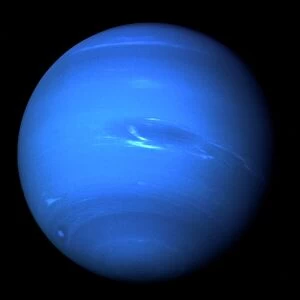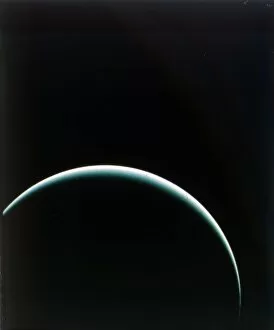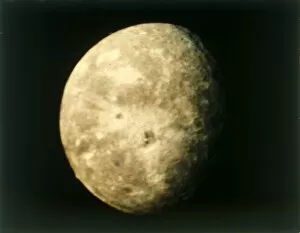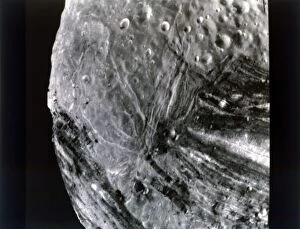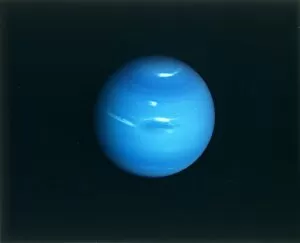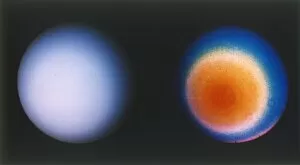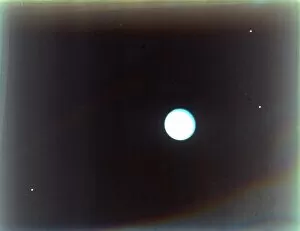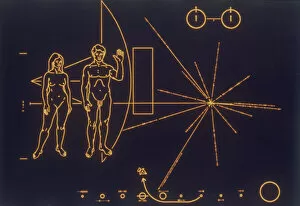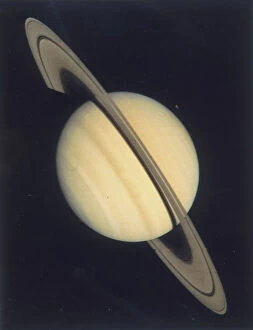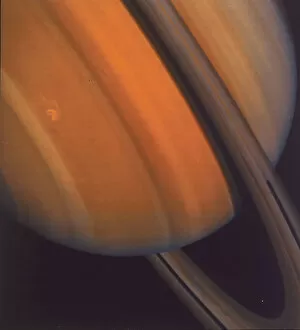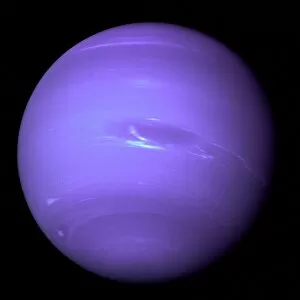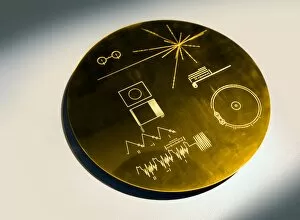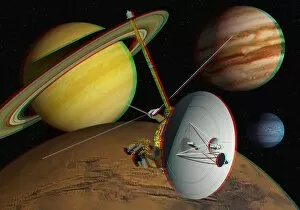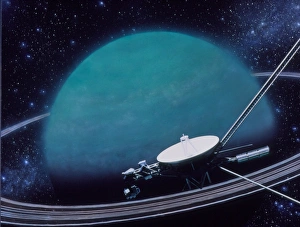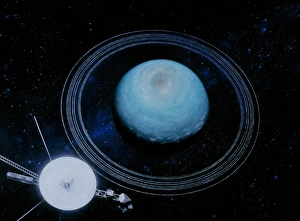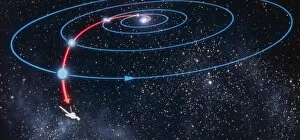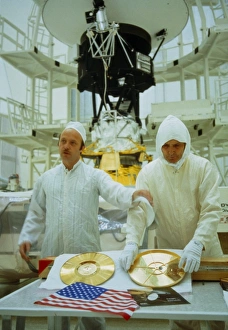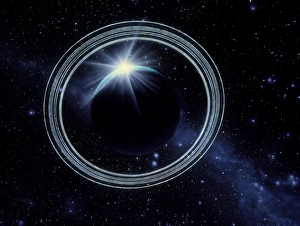Voyager 2 Collection
"Voyager 2: A Journey Through the Outer Reaches of our Solar System" Embarking on an extraordinary mission, Voyager 2 ventured into the depths of our solar system
All Professionally Made to Order for Quick Shipping
"Voyager 2: A Journey Through the Outer Reaches of our Solar System" Embarking on an extraordinary mission, Voyager 2 ventured into the depths of our solar system, capturing breathtaking images that unveiled the mysteries of distant planets. With Neptune as its final destination, this intrepid spacecraft provided us with a glimpse into worlds previously unseen. On January 25th, 1986, Voyager 2 gifted us with a mesmerizing image of Uranus. From millions of miles away, we witnessed the majestic beauty and enigmatic nature of this ice giant. The rings encircling Saturn also revealed their ethereal charm when captured by Voyager's lens from a distance of 27 million miles. As it continued its celestial odyssey, Voyager 2 encountered Uranus' moons Oberon and Miranda on January 24th, 1986. These captivating snapshots allowed us to marvel at these distant satellites in all their splendor. Saturn once again graced our eyes through Voyager's lens as it showcased the planet alongside its moon Dione. This awe-inspiring sight reminded us of the vastness and grandeur present within our cosmic neighborhood. Neptune awaited Voyager's arrival in the early '80s when it bestowed upon us yet another remarkable view. Its deep blue hues and swirling clouds captivated our imagination while reminding us that there is still so much left to discover beyond Earth's boundaries. Even before reaching these outer giants, Jupiter's moon Europa caught Voyager's attention back in July 1979. This encounter offered a tantalizing glimpse into what lies beneath Europa’s icy surface—a potential habitat for extraterrestrial life. Not only did Voyager unveil planetary wonders but also exposed Uranus' upper atmosphere adorned with enchanting clouds during its visit in the mid-'80s. These delicate formations added an element of artistry to this frozen world. With each passing milestone along its trajectory came new revelations about our universe.

